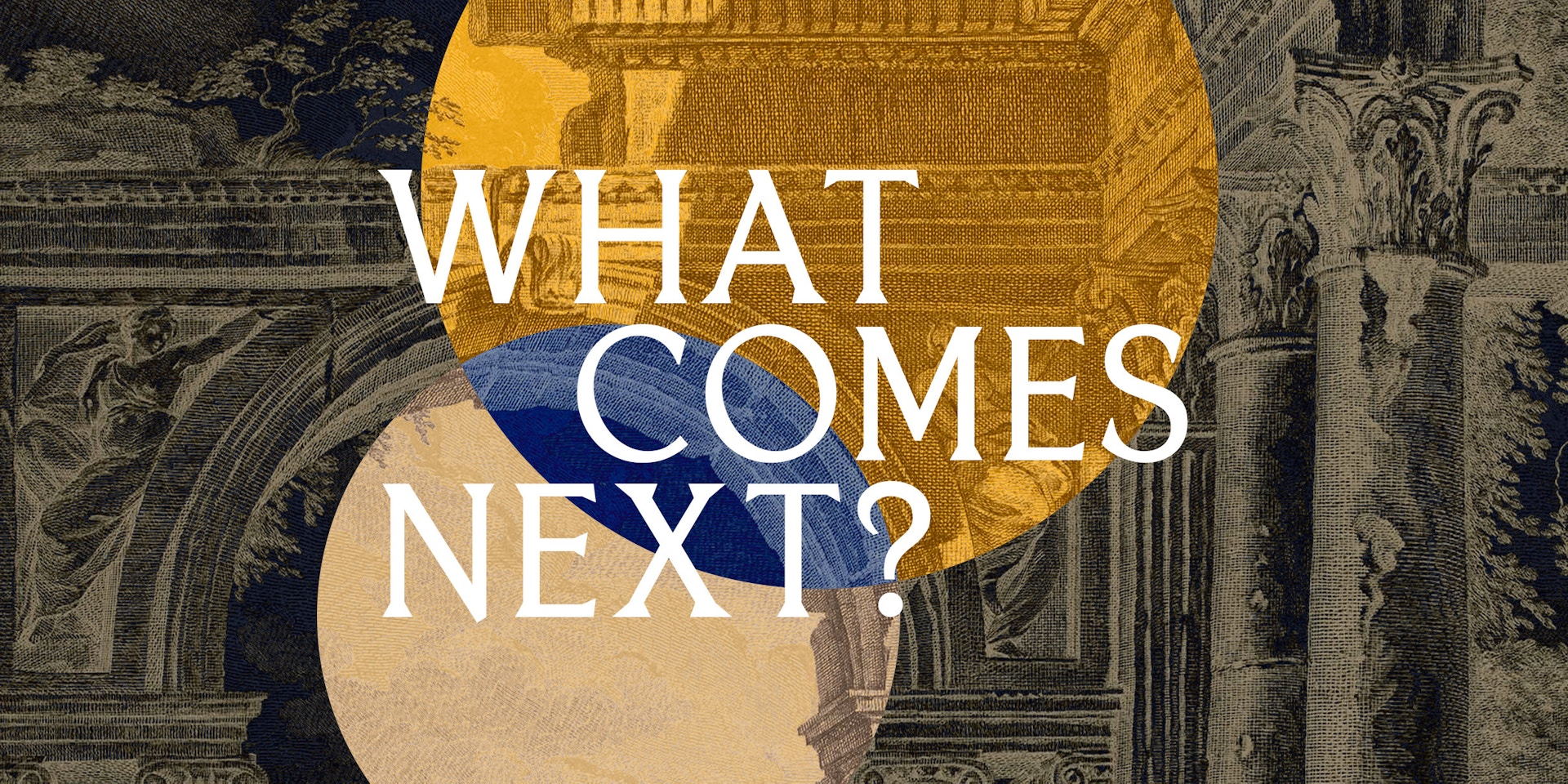
What Comes Next? TEFAF’s Young Dealers Reflect on the Future of the Art Market
From collecting trends to emerging technologies, 28 specialists from leading galleries around the globe explore what the future might hold
- By TEFAF Editors
- Meet the Experts
How might current collecting trends develop? How will new technologies contribute to the experience of art? Which steps can new collectors take to build their strongest future collection? Young dealers representing leading galleries from around the globe explore the opportunities of the art market of tomorrow. With specialties ranging from ancient jewelry and Asian antiquities to Old Masters and modern art, opinions and experiences might vary—but these ambitious dealers are united in urging new collectors to develop their eye and intuition, and above all, to follow their passions.
Art Market Opportunities
What are the biggest opportunities new collectors should be aware of in the market?

Mica Bowman
Director, Bowman Sculpture
“The most important thing to think about in terms of opportunities for new collectors is that there are still plenty of them. There is an understandable nervousness amongst new collectors when considering artworks from the 19th and 20th centuries by big-name artists like Rodin. These works are in high demand, and there are finite numbers in existence, and are, therefore, highly valued. My advice when starting a collection would be to start small. It is currently still possible to buy a nice Rodin torso for under £50,000 or an expressive hand. Rodin is a revered sculptor, and it is safe to say that his works will only gain in art historical importance and value going forward. Secondly, for those looking to spend less than £50,000, consider buying in half shares or purchasing your art over a period of time. Anyone can and should be able to buy art they are passionate about.”
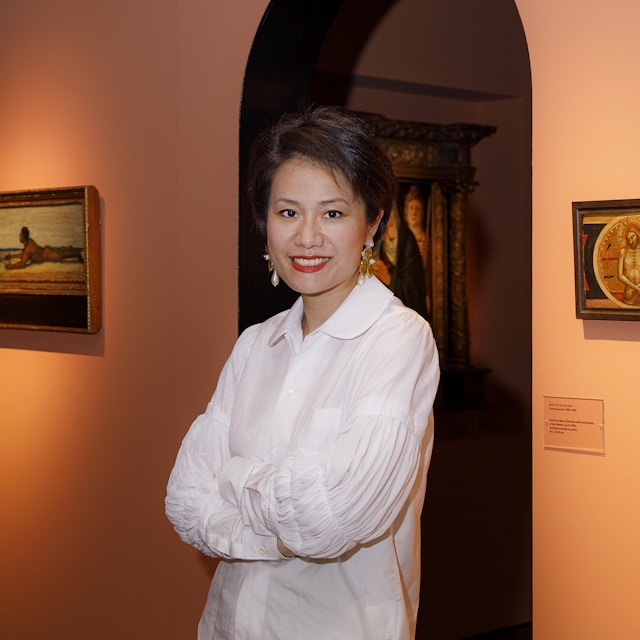
Yuan Fang
Projects Director, Nicholas Hall
“Edith Wharton once wrote a story about a well-to-do young American who, following his Grand Tour education, was tasked to form a gallery of masterpieces. But instead of pursuing Domenichino, Carlo Dolci, Guercino, Carlo Maratti, and Salvator Rosa, he opts for Piero della Francesca, Vittore Carpaccio, and Fra Angelico against the prevailing taste, which by today’s standards, would have been a superb investment. A new collector could train their eye by looking at as many good examples as possible, and forming trusted relationships with a conservator, dealer, and curator to develop a balanced understanding of the market. From Artemisia Gentileschi to Sophie Taeuber-Arp, women artists of the past have been put in the spotlight in recent years. The pendulum has, perhaps, swung away from certain artists and subjects that appear insensitive to an inclusive world view.”

Harry Gready
Director, Benappi Fine Art
“For me there is a misconception that the contemporary art market is the only market with the possibility of finding “up and coming” or undiscovered artists. At Benappi Fine Art we regularly break this myth with exciting new discoveries within the field of Old Masters, where there are still opportunities to buy timeless works of art. For young collectors, I would always recommend the late 19th and early 20th century, a period where a plethora of highly skilled artists from different corners of Europe were making groundbreaking work, reflecting the new modern world emerging around them, much of which has yet to receive the acclaim it deserves. Through the greater breadth of research and exploration of this era today by a younger generation of curators and dealers, there is the possibility to purchase pivotal pieces of art historical importance that have been forgotten by time.”

Nick Hemming-Brown
Gallery Director, Connaught Brown
“Newspaper headlines would have you believe that every art transaction is a multimillion-dollar deal, and that collecting is either beyond the reach of mere mortals or exclusively digital. However, there are areas of the market where opportunities exist at very reasonable prices. The explosion of movements, schools, and manifestos at the end of the 19th and the start of the 20th centuries meant that there are innumerable artists who were at one point at the cutting edge of art history. Many of these names are either forgotten or no longer receive the recognition that they deserve, and that means remarkable objects within the Impressionist and Modern field can be affordably found. Largely overlooked by today’s flippers and speculators, this is where enthusiastic collectors can build a collection.”

Hayley McCole
Specialist, Kallos Gallery
“Over the last couple of years, we have seen a real surge of interest in ancient jewelry, especially among new and young collectors. Ancient jewelry has long been an area of our market that has been undervalued, and we see a lot of potential here—so much so that we have created our own jewelry brand, Kallos Fine Jewellery. Part of the appeal of wearable ancient jewelry, including intaglios, coins, and amulets, is its intrinsic connection to the past but often at an affordable level. They are miniature pieces of art in their own right that can be worn and enjoyed every day, but they can also be collected as investment pieces.”
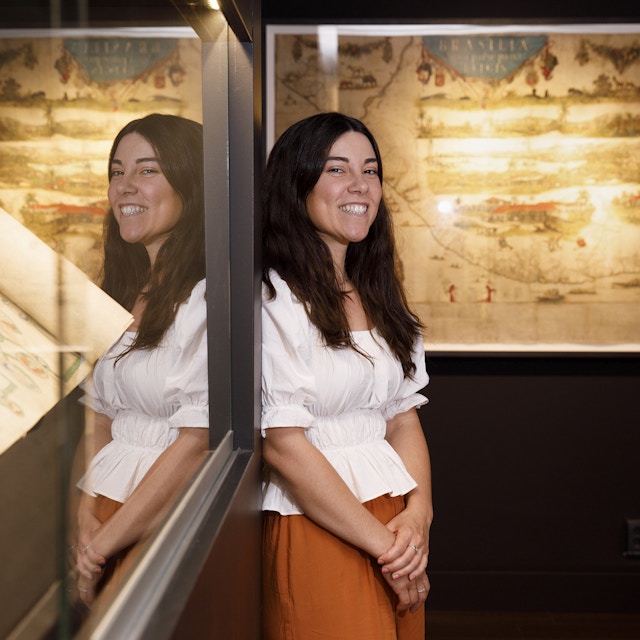
Elena Napoleone
Gallery Manager, Daniel Crouch Rare Books
“The interest in antiques is stronger now more than ever, with the theme of sustainability significant to a younger generation of collectors who are aware and careful about their modes of collecting. In particular, antique books and maps offer the opportunity to build exciting collections starting from all price points and encompassing any subject and location. There are many new and young dealers with an impeccable eye and training that are eager to form new collectors. New collectors have the chance to approach the field through a variety of channels, from digital platforms to biblio- and carto-specific fairs that dot the calendar around the world. We are seeing more and more great material and collections reappearing on the market. New collectors have the opportunity to find and own works that are educational and entertaining, as well as decorative, and that keep the observer always discovering new details.”

Patrick Williams
Director, Adam Williams Fine Art
“Collecting in the field of Old Master paintings is presently an opportunity. Incredibly dynamic paintings with history and soul can be bought for relatively affordable prices compared to works of similar prestige in the Impressionist, Modern, and contemporary markets. For example: Baroque paintings of incredible quality are currently very fairly priced—especially considering they are tangible relics of the birth of realism in Western art history. A new collector in this area must educate themselves in how to read condition, however the rewards of investing in collecting Old Master Paintings are ample. With the broadest selection of paintings and dealers in the field, TEFAF Maastricht is without a doubt the best place for a new collector to seek out Old Master paintings.”
Digital Technologies
What opportunities do you see for new technologies to contribute to the art market of the future?

Simon Levy
Sales, Galerie David Levy
“First, digital technologies provide new ways to be seen. Tools that are becoming more user-friendly represent significant opportunities for artists and dealers to reach new and different audiences without being limited by physical spaces. With, for instance, upcoming virtual-reality services that will be less expensive and of better quality than those today, online showrooms could provide a more significant scale to exhibit art. They could better present sensory experiences, translating emotional feelings still only experienced physically. New independent and emerging designers will also have more opportunities to share their voices in the global creative industry, which currently remains competitive with critical players in big cities often leading the charge.
Something to keep in mind, especially for our sector, is that the emotional expression of artworks’ narratives forms the basis of their value, in addition to the artist’s legacy and pedigree. Digital technologies that provide the best storytelling medium and visual experience for both physical and digital artworks will be the most used by galleries and artists.”

Hester Middelweerd
Gallery Director, Jacques Barrère SAS
“Over the last couple of years we have seen a growing interest in our Asian antiquities from a younger audience. There is a fresh look of building an art collection that combines contemporary art with ancient pieces, which creates an interesting dialogue. One of the ways digital advancement has played a role in this is social media. Instagram, for example, gives us a great platform to reach a crowd that may otherwise overlook Asian art or antiques. Another major technical advancement is blockchain. This year we started using blockchain to secure the provenance of our artworks, as heritage is an incredibly important aspect for stating the authenticity of our antiquities.”
Collecting Trends
How do you see current collecting trends developing in the future?

Massimiliano Caretto and Francesco Occhinegro
Owners, Caretto & Occhinegro
“Nowadays we see some essential ideas at the core of collecting. While some collectors have a high demand for unpublished works from private collections and rediscoveries, there has also been a shift from a “philatelic” collection to an emotional one; a visual style of collecting, first and foremost. We believe that the “classics” are now back in style due to their richness in form and depth of the subject. While there is less interest in more scholarly aspects, the enthusiasm for form and colors with archetypal value is palpable, as well as the fascination with the contents and critical interpretations of works of art. It is a phenomenon we see favorably, and the future challenge for gallery owners will be to describe the pieces in contemporary terms, while keeping in mind that our job is to offer beauty and inspirations, two things that transcend time and space.”

Laura Kugel
Associate Director, Galerie Kugel
“I see more and more collectors and institutions investing in works by lesser-known or rediscovered artists. In our field of decorative arts, if you dig deep enough, you can come across incredibly talented makers somehow forgotten by history. The opportunity to buy these unique objects is an exciting one that is gaining increasing appeal lately. It is also rewarding for us dealers to feel like we can bring lost artists back into the spotlight.”

Guillaume Léage
Director, Galerie Léage
“Eighteenth-century furniture and objets d’art are experiencing a new wave of interest in recent years. Exceptional sales, such as the Givenchy or Hôtel Lambert collections promote the French taste and the period which made it its signature. These sales spotlight renowned craftsmen of the 18th century, from Bernard II van Risenburgh to Jean-François Oeben, cabinetmaker of King Louis XV. It is this remarkable cabinetmaker that we had chosen to feature on our stand at TEFAF Maastricht earlier this year. His brother’s and his eclectic masterpieces represent the beauty of cabinetmaking during the eighteenth century. Ingenious mechanisms, incredible marqueteries, so many testimonies for the great refinement à la français. Collectors, indeed, turn more and more towards these great names, and this is why we at the gallery want to continue acquiring exquisite pieces with royal provenances and outstanding craftsmanship.”

James Richards
Manager and head of research, Daniel Katz Gallery
“Collecting used to be something done by a select few in a specific area or field. However, society and, importantly, the way we consume culture has changed. We now interact with art as never before and in a much more mainstream way (think memes using art, limited-edition trainer auctions, NFTs, Gucci campaigns including Old Masters, and immersive digital Van Gogh exhibitions). As such, tastes in collecting are more varied and collectors’ horizons are broader. I think we will see more new clients realize the breadth of the market and the value of art as a great asset and store of wealth during difficult times. Of course, this will lead to challenges for dealers. They will need to try to understand and appreciate that depth and variety of that interest, as they also interact with collectors across ever-more diverse demographics. Nonetheless it is a challenge which is exciting and ultimately a great opportunity. Something that will remain constant undoubtedly is quality and condition, which is why TEFAF is special.”

Valentina Rossi
Gallery Director, Trinity Fine Art / Carlo Orsi Gallery
“The biggest new trend in collecting is the attention to the possible narratives that can stem from any work on display. Paintings and sculpture are now being judged not only on their artistic merits (quality, provenance, conservation) but also on their relevance in today’s political and social discourse. As a result, we—as Old Masters dealers—must ask ourselves how our centuries-old pieces can still be relevant today, and more importantly what fundamentally universal questions could be answered through them.”
New Collectors
What steps can a new collector take now to build their strongest future collection?

Celine Ariaans
Gallery Manager, Aronson Antiquars
“First of all, you need to find out what kind of art appeals to you by visiting art fairs and galleries. When you find something you like, you should do your research: visit museums, talk to an expert, read books. Obtain information about the object: is it an important piece; how does it fit into art history; what is the condition of the object? Choose quality over quantity. A strong collection cannot be built in one day. It will take time, so don’t be tempted to purchase a lot of small objects. And dare to combine—you don’t need to stick to one specific kind of art or style period. The most important thing is that you collect with your heart.”

Joséphine Balloul
Director, Galerie David Levy
“It is always such a pleasure to speak with new collectors. Their excitement for art is refreshing, and I love to help them in their choices. Some steps a new collector can take to build a stronger collection would be to talk to the dealers—fairs are an amazing opportunity. They are knowledgeable, passionate about their work, and love to talk about it. It is a nice way to learn more about art and their insights into the market and artists. I would also tell new collectors to buy less but better. In collecting, the tendency to accumulate and the appeal to “get more” can be a trap. A smaller collection but of a better quality is for me the key to a strong and perennial collection.”

Tommaso Carletti
Gallery Manager, Bottegantica
“One of the main tips for a new collector is that of building their own path in the art world. Visit as many fairs, exhibitions, galleries, and museums as possible, read catalogues and art books—in short, do your research. Try to understand what you like and, equally important, what you do not like. Keep yourself up-to-date with trends in the art world and the art market, however, do not let yourself be too much influenced by them. When it comes to buying, respect your taste, always ask for all the information you need, and only finalize a purchase when you are fully convinced to do so. The more methodical and determined you are, the stronger your future collection will be.”

Miranda Chance
Sales & Business Development, Asia, Waddington Custot
“Collect what you love, regardless of fashion. Your passion will reward you in making good choices on price and quality. Seek out good advice from people you trust, although your own judgement is the most important. Do your homework, and independently conduct your own research and due diligence. You will find it enriching, and it allows you to make meaningful connections with fellow enthusiasts.
Don’t feel pigeon-holed, as collecting broadly is fun and exciting; I would love to display Jeremy Lancaster’s Naum Gabo sculpture next to a video work by Zheng Bo or Sin Wai Kin. I recommend anchoring your collection in quality pieces by modern masters; if you have the chance, the Chinese painter Chu Teh-Chun made some beautiful oil paintings in the 1980s. Opportunities can be found in researching lesser-known artists, for example I recently discovered New York painter March Avery, whose dissociative colors I love.”
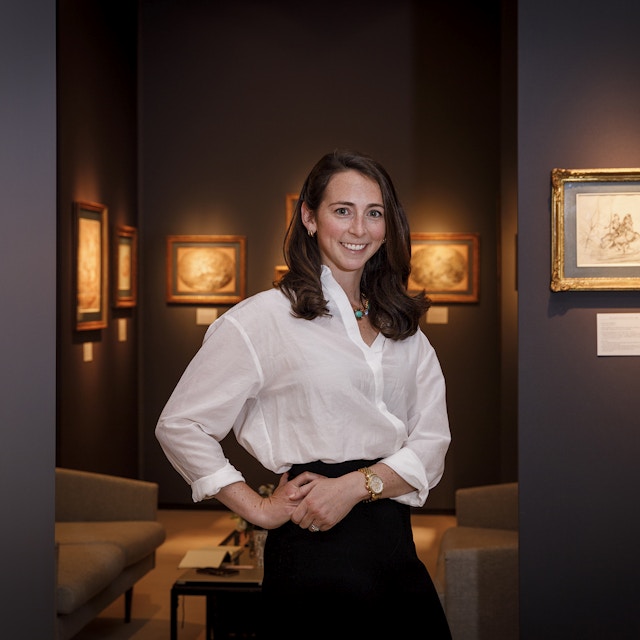
Megan Corcoran Locke
Associate Director, Stephen Ongpin Fine Art
“Many young collectors seem to be following the trends that are getting a lot of hype in the media—the ‘sexy’ investment. In my opinion, while this kind of collecting can be quite fun, I don’t believe it is the best foundation for building one’s personal collection. As a starting point, young collectors will want to look to a medium or genre where they can really train their eye without breaking the bank (such as works on paper: drawings, photography, prints, etc.). Not only do I genuinely believe that this will provide many fruitful opportunities for young collectors, but it also allows them to develop their eye and gain the skills needed to continue finding opportunities to build a strong and unique collection without relying too heavily on market speculation.”

Adrien Delestre
Gallery Director, Stoppenbach & Delestre
“I believe that new collectors should concentrate on what they are drawn to first and foremost, and then connect their own interest to a more art historical basis and the context in which the work was created. I would suggest aiming for an overall cohesiveness within their collection, by making links between artworks and or artists in terms of themes, schools, period, and material. Being open is crucial for remaining curious while discovering different artists or movements. Ultimately I think that collecting is a culmination of personal acquired taste, research, and acquisition opportunities.”
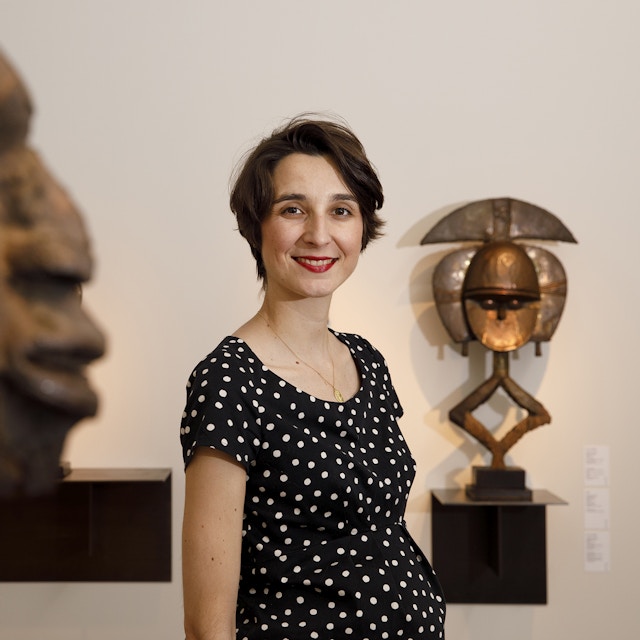
Marie Duarte-Gogat
Director, Galerie Bernard Dulon
“My main advice to a new collector in my field would be to find the right balance between knowledge and emotion. Read, observe as many objects as possible, train your eyes, and learn to recognize the great sculptures. Of course, during this time of learning, they will have to be accompanied, advised, and guided by specialists, experts, amateurs, or other collectors. Art is a perpetual discovery. The ancient arts of Africa, Oceania, and America are vast and complex, but the possibilities for learning are exciting. This is why it is important to exchange, discuss, debate, and confront your feelings. I also think that the new collector should try to get a head start and buy the work that everyone wants tomorrow. In the art of Africa, for example, collectors are able to acquire exceptional works from the regions of Burkina Faso, Nigeria, or Cameroon at prices that are still reasonable compared to the larger market.”

Laura De Jonckheere
Director, De Jonckheere
“My first advice to a new collector is spend some time looking. The eye is like a muscle: the more you see, the more you are able not only to define your taste, but also to recognize a great versus a good picture. Visit as many museums, fairs, and galleries as possible. Then, of course, buy with your heart, but always look for the direction you want to give to your collection, and set a level of exigence that guarantees the perennity of it no matter the field. An iconic or unique subject, a great state of conservation or provenance, an institutional presence: these are elements that can’t be overlooked.”

Charlie Mackay
Gallery Director, The Weiss Gallery
“Expand your initial curiosity by seeing and learning as much as possible: Whilst it is tempting to rely on digital media to find a potential collecting area, foundations—and obsessions—are built on discovering objects in person. Many online outlets have little control over the quality of the artworks they offer and are generally cluttered, which can confuse one’s judgement of value and, thus, affect your collection’s standards. That being said, even the best collections start with a mistake (or two) so being humble and flexible enough to know when to adjust your collecting path and habits is also important.
It is always wise to seek advice from professionals, but after you have finessed your own genuine interests and gained confidence within the market, trust your instincts and follow your heart. There is no need to rush—the most interesting collections are built over a lifetime.”
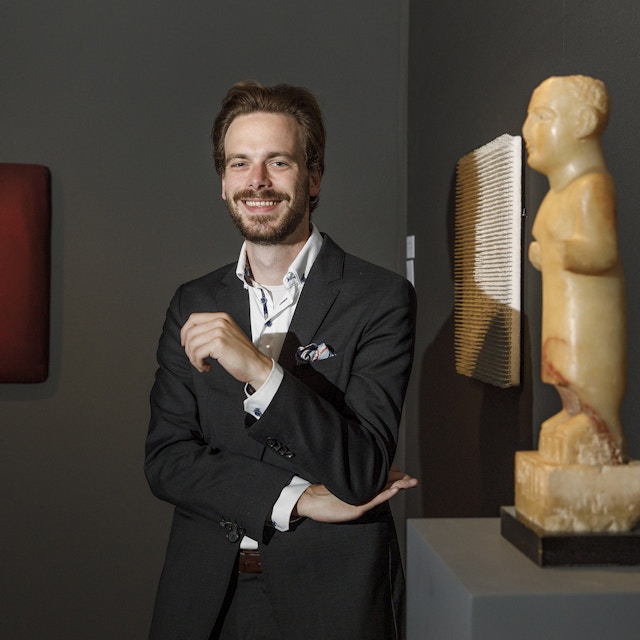
Bert Melkebeek
Art Historian and archeologist, Axel Vervoordt
“Completely unrelated to the ‘business’ aspect, the most important step for me has been to broaden my horizons. I was trained as an archaeologist, and ancient art will always be my passion, but I have grown immensely as a person by learning from Axel and Boris Vervoordt about art from the most diverse backgrounds imaginable, past and present. True beauty can be found anywhere, and I believe that collectors shouldn’t focus on specific time periods or geographical regions, but rather think about the story they are trying to create. My own (modest) collection is quite diverse, but every piece I own is connected to the others by that one distinctive, but elusive, touch that immediately conveys the ‘humanness’ that shaped it. Every piece is a small testimony of our shared existence on this planet, wherever and whenever that might have been, and I love that.”
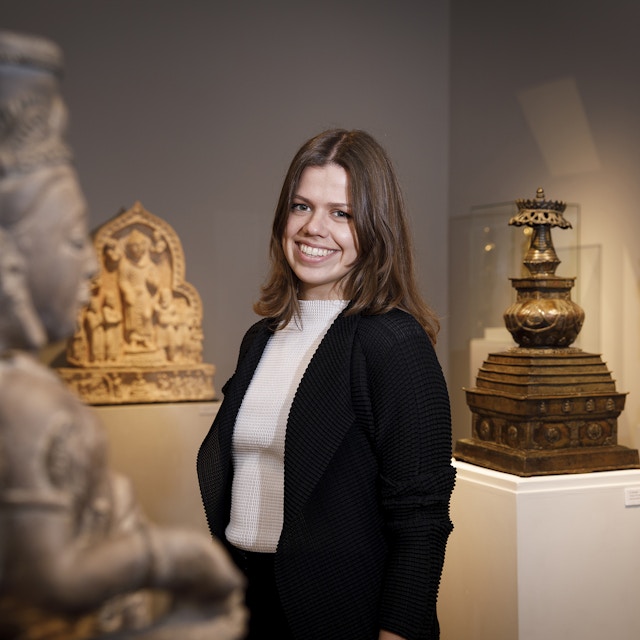
Elena Nies
Associate Director, Marcel Nies Oriental Art
“When starting an art collection, you enter a new world in which you learn to develop your eye to the next degree, as buying art is a commitment. While it may be daunting at first, I recommend following your intuition and trusting your personal taste because trends change. Aside from intuition, it is important to look at quality, authenticity, and provenance especially within the antiques market. Regardless of the size, material, or age of the artwork, the history of collecting adds value and is a crucial aspect in building a noteworthy collection. Lastly, as a collector it is helpful to understand the medium of the artwork. For instance, when buying a bronze sculpture, it is advantageous to comprehend casting techniques in order to fully understand its artistic ingenuity. High-quality, well-made art will always be inspiring and never loses its value.”

Charis Tyndall
Director, Charles Ede
“If I could give a single piece of advice to a collector just starting out, it would be to buy what you love, not simply what you can afford. In five or ten years’ time, you will never remember the extra money, but you will have built yourself a collection of the best there was to offer. All too often our older clients bring us pieces they bought when they were starting out, which are no longer up to par with the rest of their collection. And they all say that their biggest regret was not to push the boat out a little more in the early days. Buy less often, but higher quality. And always ask yourself, if money wasn’t an issue, is this still the piece you would go for?”


